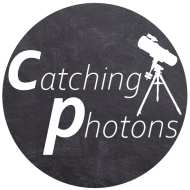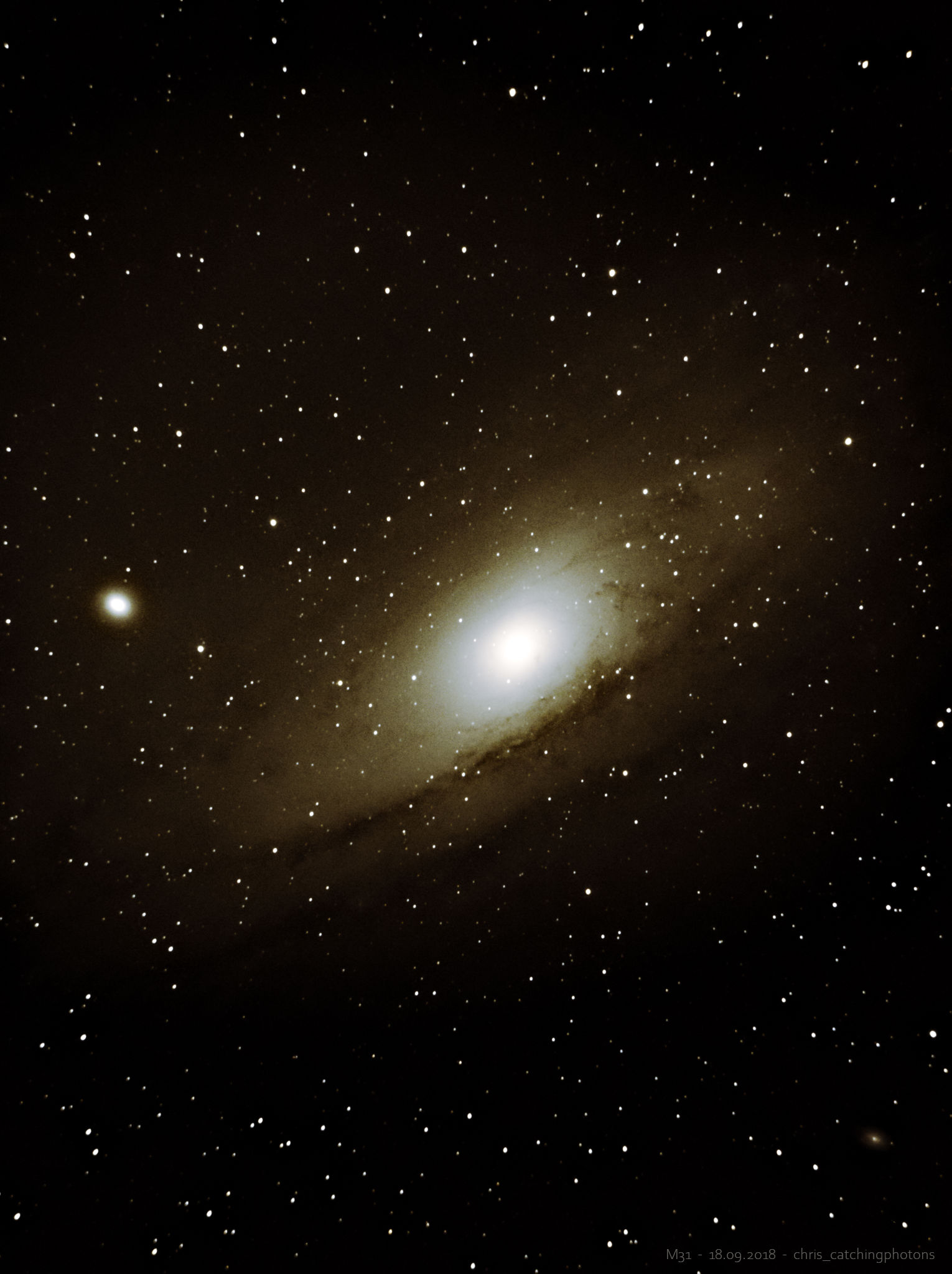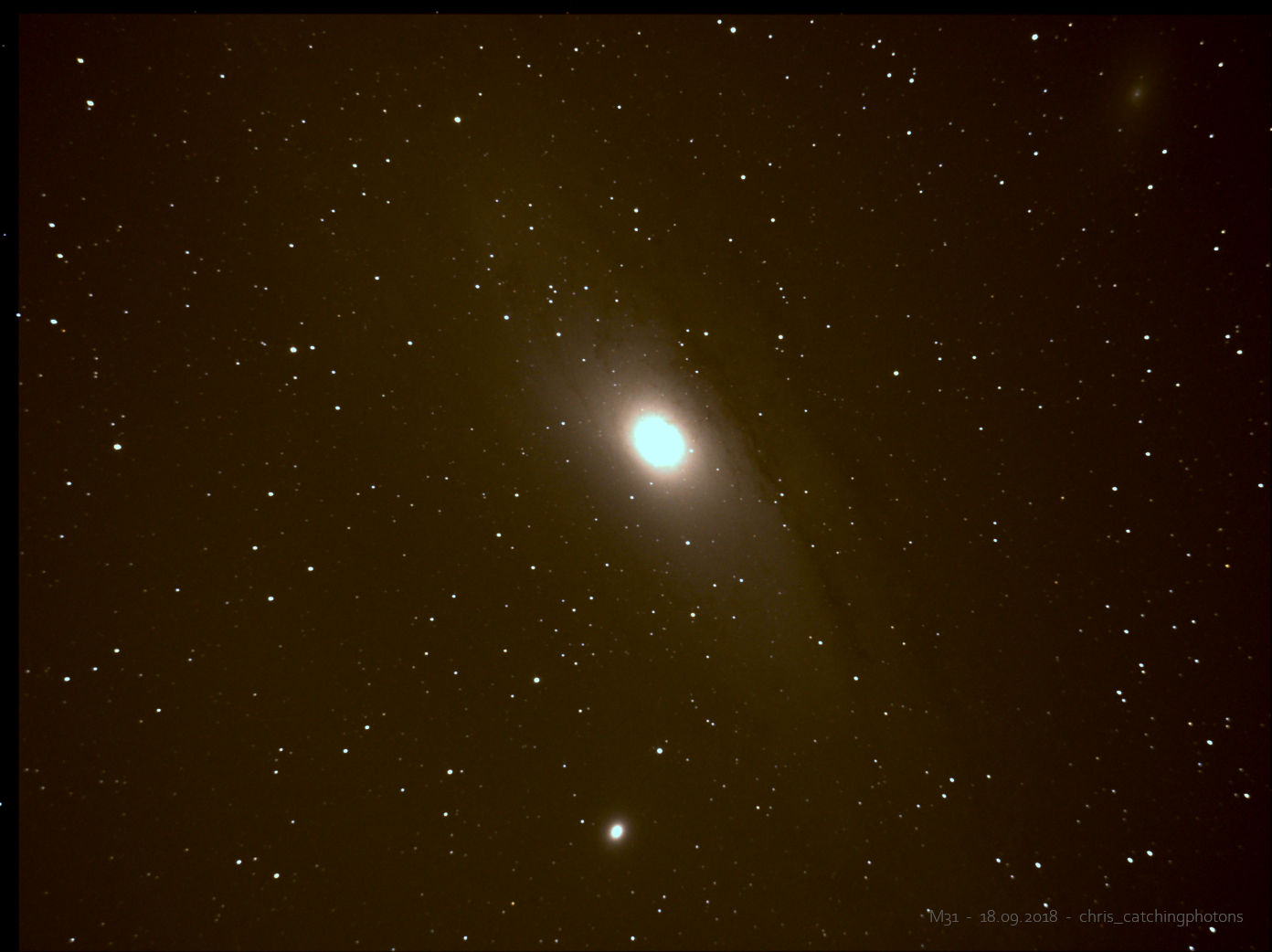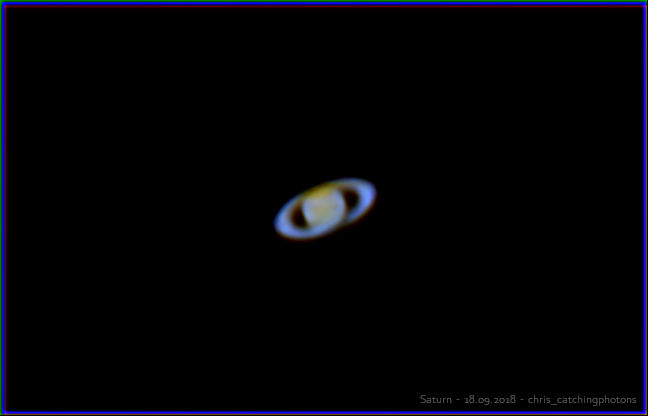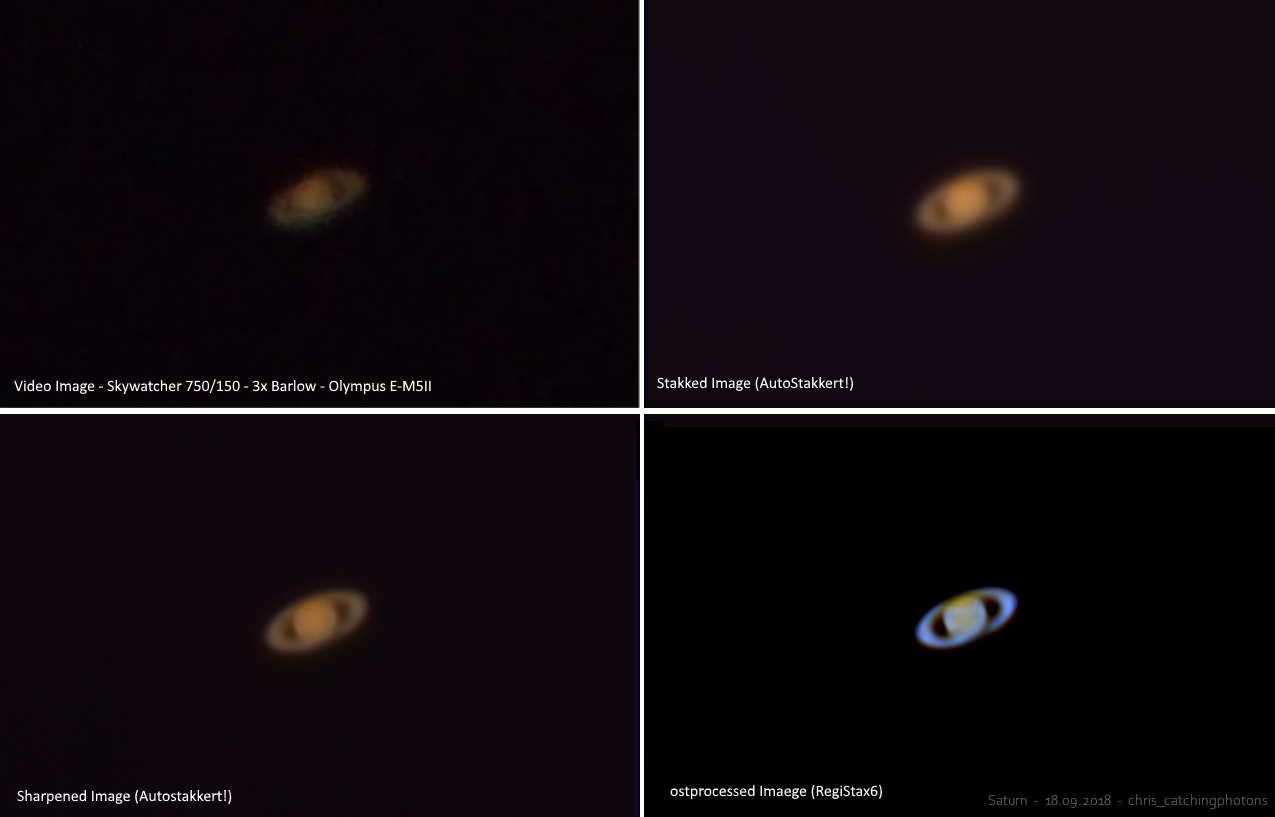18.09.2018
A few days before this session I purchased a T2-4/3 Olympus adapter ring to attach the old Olympus E510 DSLR (my brother lent me) to my Skywatcher 750/150 PDS. With such an adapter you can detach the lens of the DSLR and attach the scope instead as it will act as a lens for the DSLR.
Acquisition:
With this new equipment I aimed for my first deep sky object M31 the Andromeda Galaxy. I still had troubles polar aligning the mount but I found a Skywatcher procedure where one can first do a rough polar alignment, then tree-star star align the scope and then use a given guide star to refine the polar alignment. The mount slews to the guide star, then you correct for the occurring error and finally the mount reslews again and shifts the guide star out of the center. With the AZ and ALT bolts you then just recenter the guide star and refine polar alignment. A clever trick for users unable to see Polaris or users without a laptop and therefore without programs like phd2. With the refinement of the polar alignment I was now able to take 60 second long images without star trails.
Tech Specs:
12 x 60’ light frames 5x 60’ dark frames no calibration frames @ ISO 400
Post processing:
This was the first DSO so everything was new! Stacking with DeepSkyStacker worked great! It is an amazing program. Clean, easy and intuitive. The tips, double checks, given information and the workflow is ( in my opinion ) superb. I still use it after every session. The processing in PS/Gimp2 was another story. We had to learn to stretch the image, to apply masks, alter the levels, vary the contrast and lighting….
Conclusion:
In retrospective I wish we had taken more light frames! We had everything set up, everything was working. But we had no idea that it takes time (!) to gather enough light for a good image. The SNR with 12×60’ is just to high! My brother and I had little information to work with and so little came out. My brother did a great job to smooth the noise in PS and still increase the details in the clouds. The colour balance is way to yellow, the contrast might be too high and the stars are bloated but… That is our first image from deep space! I still like it so much.
Wonder of stacking:
This image was also the first image I stacked. So I, for the first time in my life, saw the wonder of math applied to a stacked image. If you compare the sub frames that go into DeepSkyStacker and the resulting image: that’s amazing! I always simmer with excitement when DSS reveals the final Autosave.tif. Great!
Second Target at that night:
Saturn again! I decided that it would be a good idea to mount the old Canon compact camera in front of the eyepiece to get another video of Saturn to work with. However I did that, but the raw-video (.mov) was much (!) brighter and richer in details so the final result is a lot sharper. One can see the rings, Saturn has a distinct shape. Fine! No Cassini division jet, but something to work with.
Third target at that night:
The Moon! This is „just“ a single frame image. We took it with the Olympus attached to the scope. At 750mm focal length and with a cropped sensor (4/3) the moon fits straight into one frame. That’s very handy, because it gives me a big and detail rich moon and I don’t have to stitch a mosaic to get a full moon. Ether way there was no full moon today, just a quarter moon. The image was sharpened in Gimp2.
Greetings,
Chris
